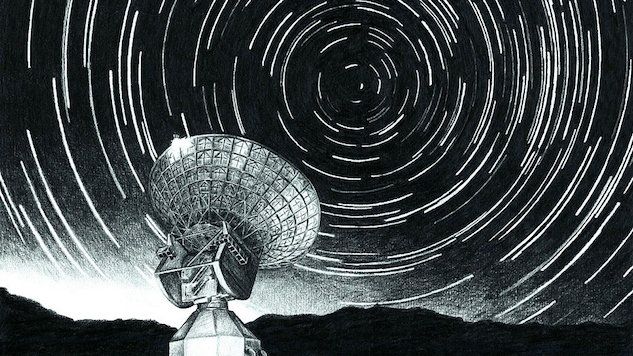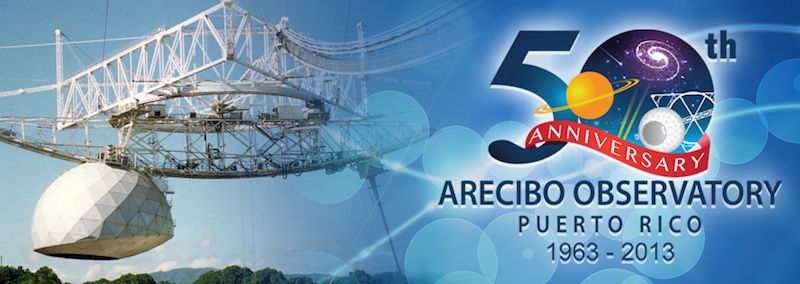Efforts To Search For, Send Messages To Extraterrestrial Life Advance In Digital Age
by Molly McCrea and Juliette Goodrich April 25, 2019 (sanfrancisco.cbslocal.com)
• In 1977, NASA scientists installed a golden record on two space probes that were part of the Voyager Mission. On each copy were dozens of images, sounds from nature, and multiple greetings in 55 different languages. The record also contained music from around the world, and included classical as well as a recording of Chuck Berry’s “Johnny B Goode.” “This was a way of telling another civilization about us,” explained the legendary astronomer and astrophysicist Frank Drake.
• Drake and fellow astrophysicist, the late Carl Sagan, also wrote what’s known as the Arecibo Message in 1974, the first interstellar radio message sent from earth to a globular star cluster known as M13 in hopes that extraterrestrial intelligence could receive and decipher it.
• Drake and Sagan also designed what is known as the Pioneer plaques. These plaques were another kind of message from earth that scientists hoped would be intercepted by extraterrestrial beings from the 1972 Pioneer 10 and the 1973 Pioneer 11 spacecraft missions.
• In 2015, Russian billionaire Yuri Milner unveiled a project called the “Breakthrough Initiatives” to search for extraterrestrial intelligence over the span of at least 10 years. Part of the Initiatives program includes a $1M Breakthrough Message competition, where the task is to design a digital message to send to advanced civilizations. But no message has yet been sent. And some, such as Doug Vakoch who heads up: Messaging Extraterrestrial Intelligence (METI), want to send the messages now and hear back from other civilizations. He explained that the messages would be sent by radio or in the near future, by lasers using very brief laser pulses.
• Not everyone agrees we should be rapidly concocting and sending messages. Stargazer Alicia Adams says, “I’ve seen Mars Attacks and that ended horribly!” Retired Professor of Astronomy Andrew Fraknoi says it’s a question over which space scientists are now grappling. “If we’re going to be deciding to advertise our presence to the universe, we should have a discussion with the rest of the world,” said Fraknoi. “Are we ready to signal out there that we on earth exist? We are barely getting along with each other. Are we ready to get along with aliens?”
• Drake thinks intelligent beings already know we’re here due to television and radio signals traveling in space. “It’s too late, folks. We’ve made our presence known big-time,” said Drake.
• A recent survey by Glocalities involving 24 countries found nearly half of all humans believe in extraterrestrials.
An ambitious new effort is underway to make direct contact with intelligent life beyond earth, improving upon 70s-era space missions which included attempts to bring messages from Earth to extraterrestrials.
For centuries, we’ve gazed up at the stars, and wondered are we alone? Some say it is time to move more aggressively and find out.
In early April, NASA’s newest planet hunter called the Transiting Exoplanet Survey Satellite (TESS) discovered its first Earth-sized alien planet. A recent survey by Glocalities involving 24 countries found nearly half of all humans believe in extraterrestrials.

ETs are on our mind. At the California Academy of Sciences in Golden Gate Park, an entire evening’s event was all about extraterrestrials. A special dance troupe performed to an eclectic mix of sounds. The sounds were excerpts taken from a famous golden record, intended for intelligent life in the universe. The 12-inch copper gold plated disk is known as the Pioneer Golden Record.
Artist Katerina Wong choreographed the performance and was thrilled to know its history.
“They were hoping if there was an opportunity to meet an ET, that they would get a little bit of understanding about what life on earth was like.” remarked Wong.
In 1977, NASA scientists installed a golden record on two space probes that were part of the Voyager Mission.
On each copy were dozens of images, sounds from nature, and multiple greetings in 55 different languages. The record also contained music from around the world, and included classical as well as a recording of Chuck Berry’s “Johnny B Goode.”
According to NASA, the Voyager 1 and Voyager 2 are exploring where nothing from Earth has flown before. Their primary mission was the exploration of Jupiter and Saturn in our own solar system but now, both probes are billions of miles away from earth – carrying a message from earth on these golden records. The hope was that somewhere beyond our solar system, intelligent life or advanced civilizations will find them and be able to decipher their contents.
“This was a way of telling another civilization about us,” explained the legendary astronomer and astrophysicist Frank Drake.
FAIR USE NOTICE: This page contains copyrighted material the use of which has not been specifically authorized by the copyright owner. ExoNews.org distributes this material for the purpose of news reporting, educational research, comment and criticism, constituting Fair Use under 17 U.S.C § 107. Please contact the Editor at ExoNews with any copyright issue.



